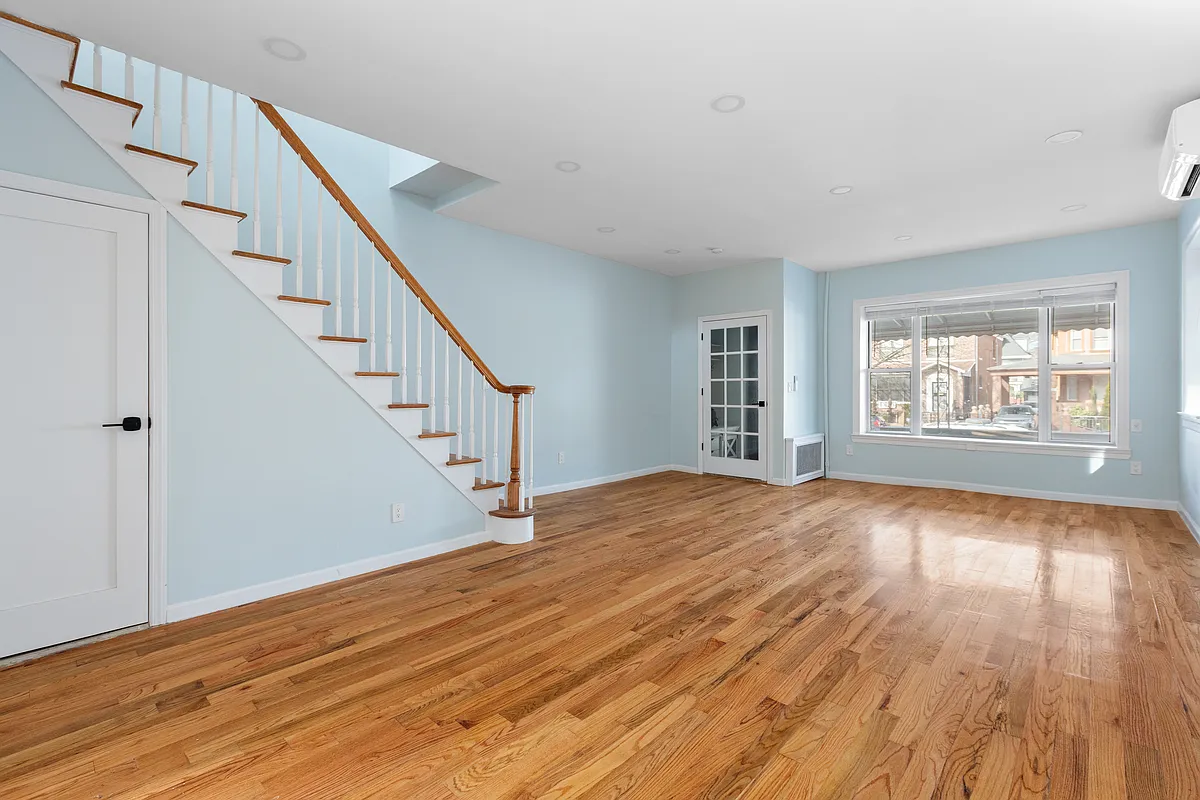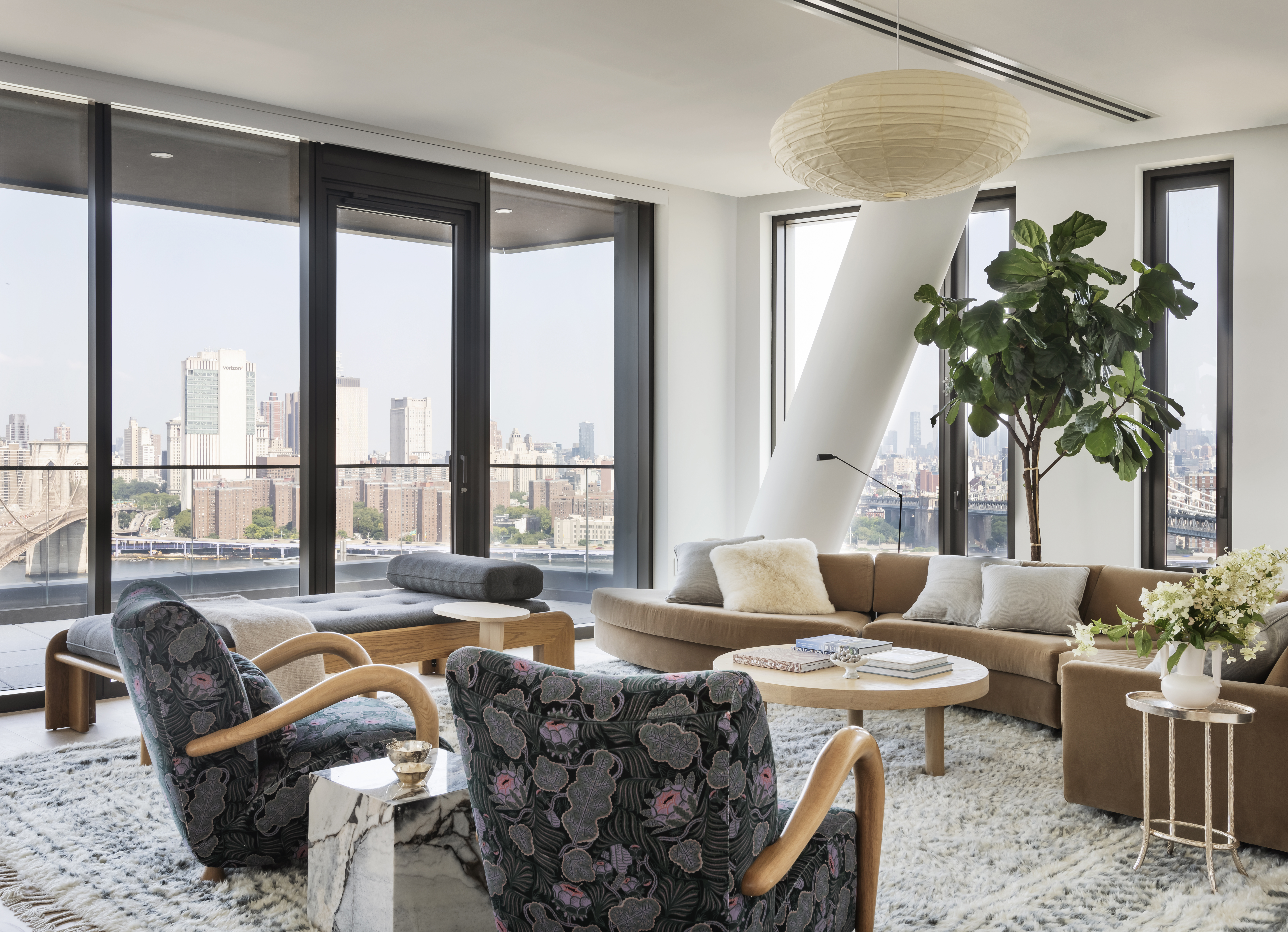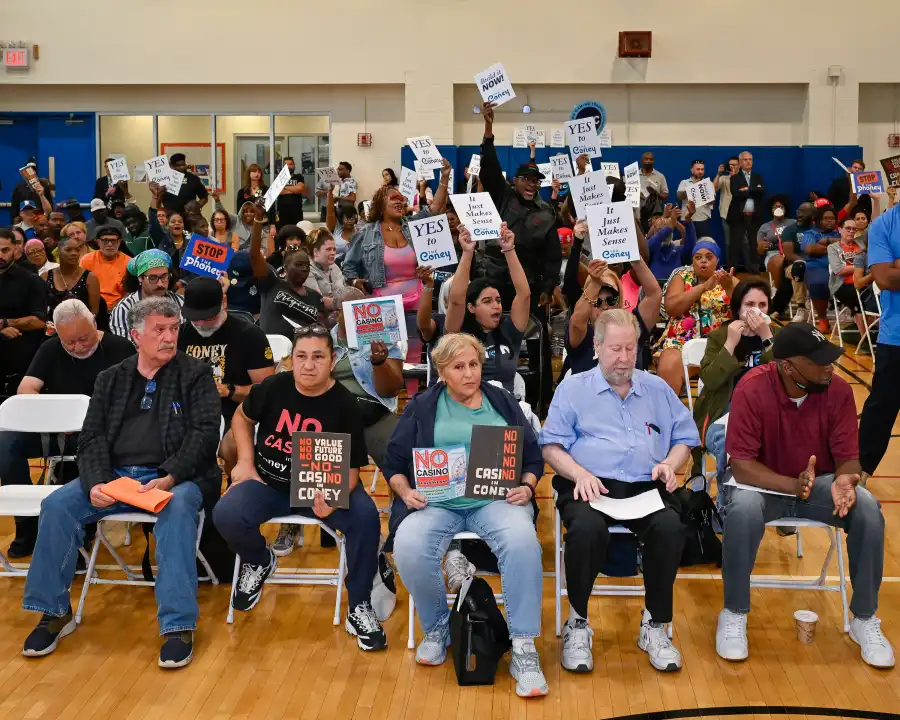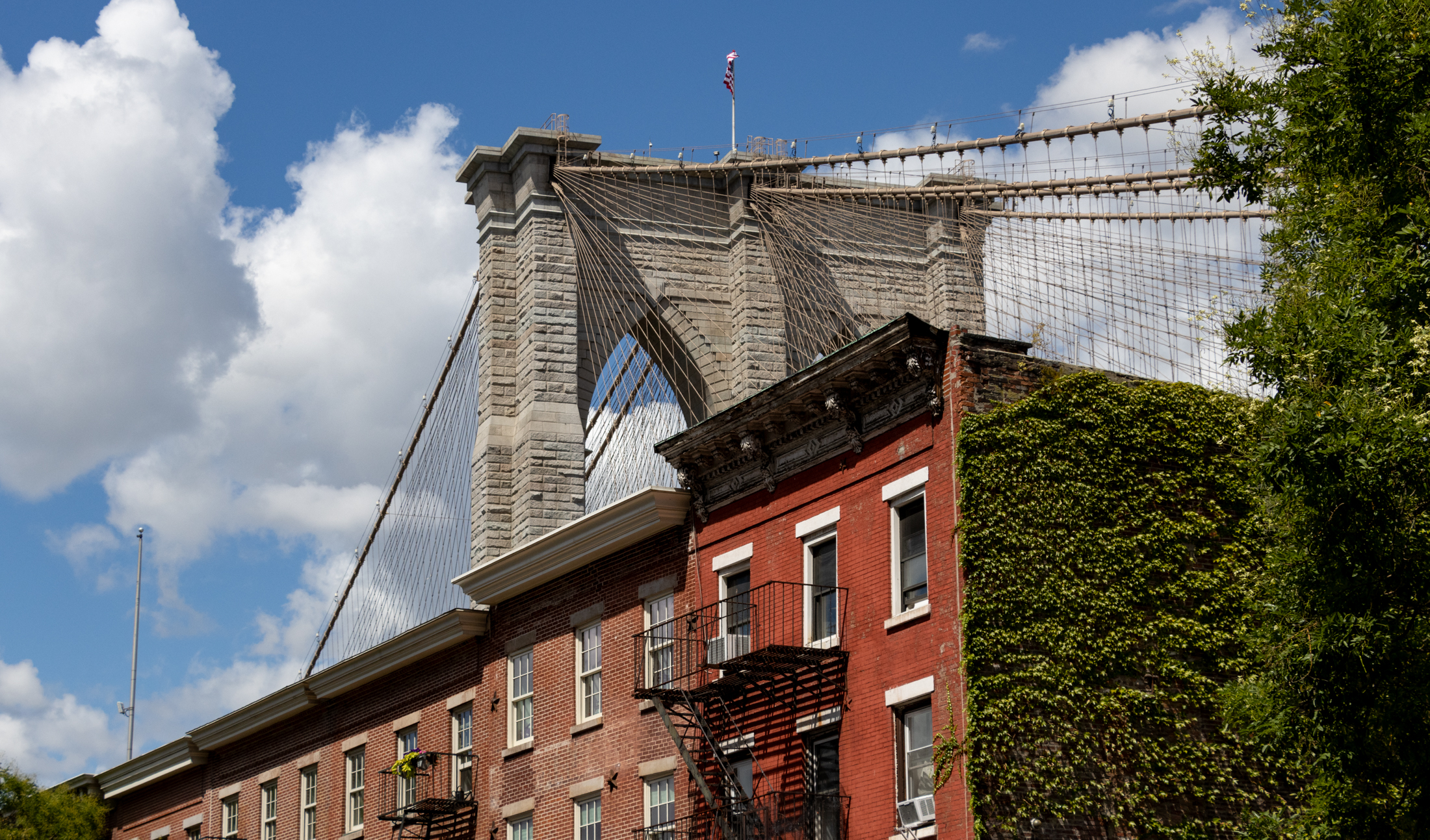Walkabout: Fulton Park
Stuyvesant Heights has some of the finest residential architecture in Brooklyn. It also has a beautiful little gem of a park. Since the Bed Stuy house tour is this Saturday, I thought it was an excellent time to discover Fulton Park. It’s hard to believe that when this park was proposed by the city, in…


Stuyvesant Heights has some of the finest residential architecture in Brooklyn. It also has a beautiful little gem of a park.
Since the Bed Stuy house tour is this Saturday, I thought it was an excellent time to discover Fulton Park. It’s hard to believe that when this park was proposed by the city, in the late 1890’s, many people in the neighborhood were dead set against it.
The streets that surround the park, Fulton, Chauncey, Lewis and Stuyvesant, were all experiencing rapid growth, and were getting a deserved reputation as choice blocks in an ever increasingly choice neighborhood. Only Fulton St could be called less than ideal.

Brooklyn Borough President J.E. Swanstrom proposed that land be set aside along Fulton St. for a public park in 1902. The City acquired the land through eminent domain in 1904, at the cost of $308,174.16, and began building.
The Brooklyn Eagle ran a story in November of 1902, showing the blocks involved, and pitching the project. The city, at that time, was still trying to decide how much of the cost of the park was going to be paid by the city, and how much would be assessed upon the property owners of those in the adjacent streets who wanted the park.
I have a feeling the cost of this park being shared with the neighboring homeowners constituted much of the opposition to the park itself.

The park was being marketed as a new gateway to Stuyvesant Heights. Before construction, Fulton Street at Lewis had a coal yard, and a row of small frame buildings with stores. The rest of Fulton Street, between Lewis and Stuyvesant, on both sides held a hodgepodge of frame and brick buildings, both commercial and commercial/residential.
As the paper says, the only modern building on the entire block was on the northwest corner of Stuyvesant Avenue and Fulton St. Chauncey St had a combination of old frame houses, as well as a continuing row of new brownstone and limestone houses, on the north side, and one story barns and sheds on the south side.
The new park would be a triangular shaped space, with the narrow end at Lewis, widening out to the Stuyvesant entrances. Most of the land needed for the park was owned by one person, a Nicholas Young, who had bought at least seven parcels with buildings on them at auction.

He was handsomely paid for the land. The most impressive buildings near the new park were the mansions of the Prosser family, located on the north corner of Stuyvesant and Chauncey. The Prosser’s were well know agents for the German steel manufacturer, Krupps.
They made a large fortune selling steel wheels and railroad ties to American railroad companies. Up until the 1880’s, when American steel finally outproduced German imports, every railroad in the country used Krupps steel.
The Prosser’s represented Krupps, selling their other products until the dawn of World War I. The patriarch of the family, Thomas Prosser, owned a lot of land in Stuyvesant Heights, including this impressive mansion. He died in 1896, and the property was sold sometime afterward.
By 1910, the house had been torn down, and replaced by what many consider to be Stuyvesant Height’s finest houses, 402-410 Stuyvesant Avenue, designed by William Debus. These houses went up about the same time most of the park was being completed. The Prosser’s still owned several large mansions in the area, one right across the street from this row.

The Parks Department enlisted the talented architects Helmle and Huberty to design the colonnaded comfort station pavilion at the eastern end of the park.
Frank Helmle, often in partnership with Ulrich Huberty, were masters of park buildings design, and were responsible for the design of the Boathouse and Tennis House in Prospect Park, as well as some of Brooklyn’s finest churches, such as St. Barbara’s in Bushwick and St. Gregory the Great in Crown Heights North. The pavilion in Fulton Park opened in 1910.
In 1930, a forgotten statue of Robert Fulton holding his ferry, the Nassau, was erected in the park. It had been sculpted in 1872 by artist Caspar Buberi, and originally stood in a niche in the Fulton Ferry House on the Brooklyn waterfront.

It was moved to Fulton Park, and rededicated by the Society of Old Brooklynites. The zinc statue was eroding and in danger of falling apart, and was removed and repaired and then returned in 1935, but further damage caused the statue to be re-cast in bronze, on a granite base, in 1955.
It really is a fine statue of a youthful Robert Fulton, with his hand on his ferryboat, the Nassau, the first steam ferry to traverse the East River, between Brooklyn and Manhattan, making it possible for the development of both Manhattan and Brooklyn as centers of commerce and helping to insure Brooklyn’s growth as a city.
Like many of the city’s parks, Fulton Park was left on its own during the bad old days, beginning in the late 1960’s. It soon had a reputation of not being safe, and was plagued by drug dealers, trash and rodents.

And like most of our city parks, neighbors both old and new began to take the parks back, demanding police action, and taking part in community clean-ups. The city finally took notice.
Sponsored by Brooklyn Borough President Howard Golden and Councilwoman Annette Robinson, a huge capital improvement for the park took place.
In 1997-98, Fulton Park underwent a massive reconstruction, which included an ornamental garden, landscaping, restoring sod and trees, paving the pathways and laying ornamental animal tiles, the terrazzo compass, repairing the flagpole, benches and fences.
The project also installed sprinkler systems, and improved electrical and drainage systems. The entire project cost over $458,000.
Today, the park is once more being enjoyed by strollers, roller skaters and bikers, as well as children and senior citizens. There are jazz concerts and art shows in the summer, and pick-up chess games at the tables near Lewis Avenue.
The trees are now 100 years old, and the Helme and Huberty pavilion is still in use. Fulton Park is once more a beautiful and well used park, the gateway to Stuyvesant Heights.
The 32nd Annual Bed Stuy House Tour takes place this Saturday, from 11-4. The starting place is the magnificent Boys High School, on the corner of Marcy and Putnam Avenues. Tickets are $20 at the door. For more information, www.brownstonersofbedstuy.org.
On Sunday, join renowned architectural historian Andrew Dolkart, assisted by Amzi Hill and myself, in a walking tour of Bedford Stuyvesant, concentrating on the areas of the proposed Bedford Historic District. The tour begins at 11am, in front of Girls High School, Nostrand Avenue between Macon and Halsey Streets. The tour is $20. For more information:
http://www.bedfordcornershistoricdistrict.org/walkingtour.html





I love your story on Fulton Park. I enjoy it by reading and bringing my children to Friday Movie Night in the park during the summer. The annual halloween trick or treat event also begins their every halloween. The blue park across the street is also used alot my the families in the neighborhood. They keep it pretty clean and safe.
This is a great little park. Thanks for another great post MM.
I love this park – it is always so serene, with people sitting on benches, strolling, and just chatting. So great to step out of the A train at Utica into this oasis. Really part of what makes Stuyvesant Heights such a great area.
Dave- you’re the guy on the tree with the bushy tail???? (I know I am going to regret that) 😉
Yes, ditto, sometimes. I either leave at 4:45 or 5:45. Anytime in between the subways are too crowded. I think I left at 4:30 yesterday. That pic was about 5:20 or so.
DIBS – you get home from work when its still daylight?!
Yes, would love to know more about the houses ringing the park, which appear to have been built at the same time.
ACTUALLY, IF YOU LOOK CLOSELY IN THE LAST PIC, I’M THERE!!!!! LOL The pic of the squirrel has me on the very far left side just as I exited the subway and noticed MM ahead!!!!!
What a beautiful little park! Who knew? I see you also caught a picture of one of your favorite nature denizens in that last picture (no, not you dave!). 🙂